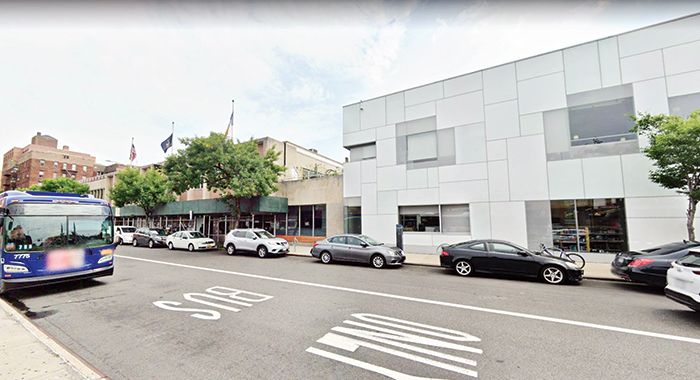Photo Courtesy of Google
Over the past two years, nearly 90 new facilities have joined the Demand Response program, including the Queens Public Library Central Branch.
By Forum Staff
Mayor Eric Adams and New York City Department of Citywide Administrative Services (DCAS) Commissioner Dawn Pinnock on Wednesday announced the expansion of its Demand Response program to reduce city government’s energy consumption, cut carbon emissions, and safeguard the local electric grid during hot summer months. On days with extreme heat — when energy use spikes across New York City — DCAS reduces energy use in city buildings and other participating facilities. Increased demand for electricity on hot summer days risks the possibility of blackouts and brownouts and requires energy providers to source additional electricity from dirtier energy sources, such as coal. In addition to helping avoid blackouts and brownouts and reducing emissions, the program cuts energy costs and generates revenue. Utility providers pay the city for its support on days of peak demand. As part of the program’s expansion, this summer, 555 facilities across more than 30 city agencies and organizations are participating in the program, including City Hall. Of these, 90 are new participants.
Since the program’s inception in 2013, city agencies have earned total program revenues of more than $100 million. Over the past two years, nearly 90 new facilities have joined the program, including the New York City Fire Department Academy, the Queens Public Library Central Branch, and the Museum of Jewish Heritage. Overall, there has been a 17 percent increase in facility participation between 2019 and 2022. The New York City Department of Education has seen a 22 percent increase in program participation across that same time period. Collectively, energy consumption will be reduced by 115 megawatts during peak demand this summer, the equivalent of emissions from driving 123,000 miles in a car. Participation in the program mitigates the need for high-polluting power plants to increase output to meet the energy demands of the city.
On days designated by utility providers, DCAS coordinates energy reduction by taking steps like powering down equipment, reducing air conditioning use, and turning off lights. Every building has target reduction goals and specific action plans for achieving the reduction.
The Demand Response program is a partnership between the City of New York, the New York State Independent System Operator, and Con Edison.
Aligned with the agency’s sustainability goals, city facilities have also begun participating in a gas Demand Response program as well. Launched by National Grid and Con Edison, 61 facilities across six city agencies supported National Grid’s efforts to cut gas consumption this past winter. Similarly, five facilities across two agencies worked with Con Edison.
While Demand Response is a uniform approach to sustain heat emergencies, New Yorkers are also encouraged to conserve energy, especially during peak demand periods like heat waves. The goal is to prevent overloading the power grids to ensure New Yorkers and their neighbors have reliable electricity service. New Yorkers can help achieve this by:
- Setting air conditioners at 78 degrees Fahrenheit. Running their cooling system at a 75-degree setting uses 18 percent more electricity and 39 percent more electricity at 72 degrees;
- Utilizing timers to set cooling systems to begin working no more than a half an hour prior to one’s arrival home;
- Refraining from using air conditioning when no one is home;
- Reducing indoor lighting; and
- Unplugging unused electronics.

